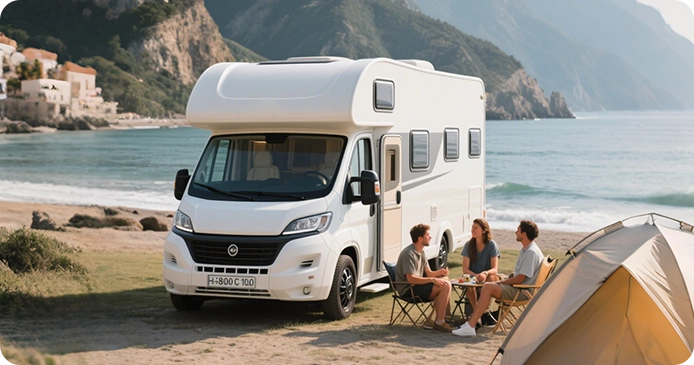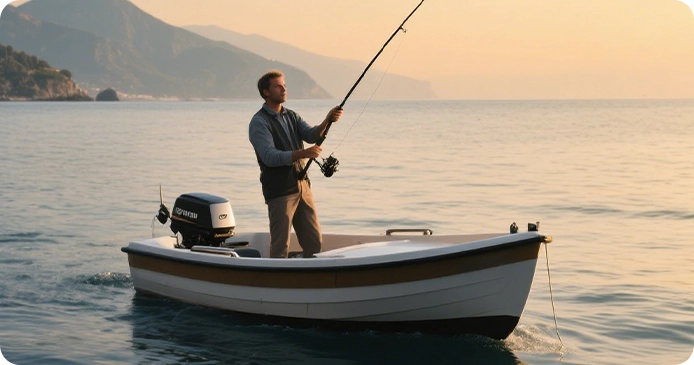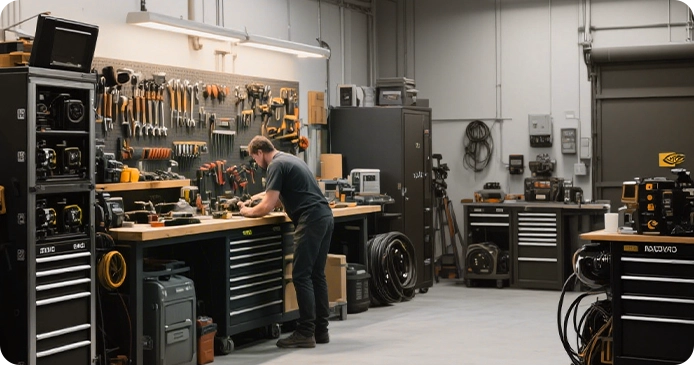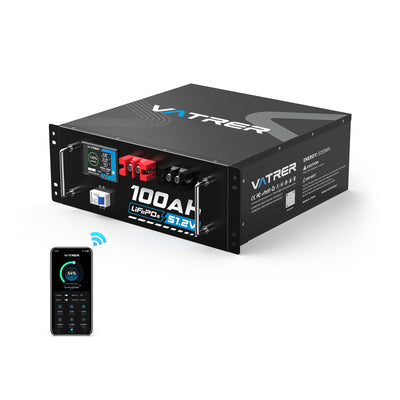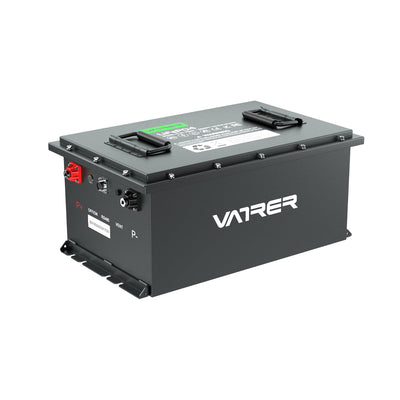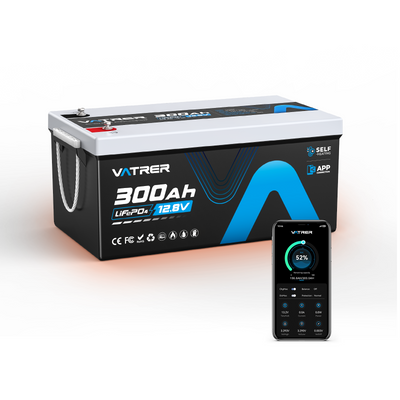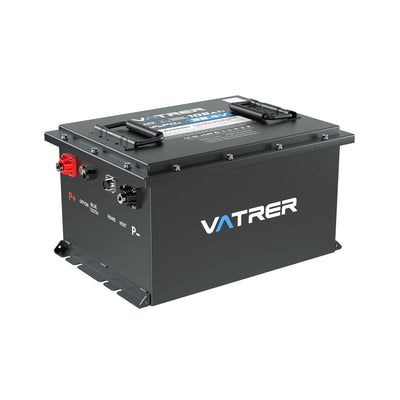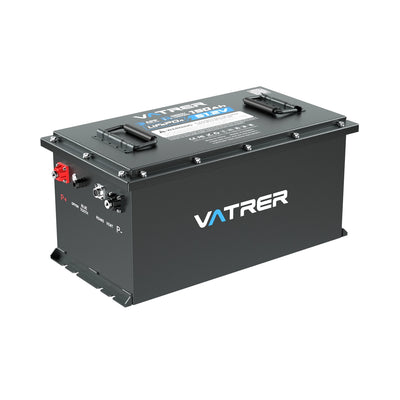
What Is a Group 24 Deep Cycle Battery?
Selecting the right battery for your RV, boat, or solar power system can feel like working through a maze of specs such as group size, amp hours, and deep-cycle ratings. Whether you’re heading out for a weekend at the campsite or running an off-grid solar installation, a Group 24 deep cycle battery is a widely used option for dependable, long-lasting power. But what sets it apart, and how can you tell if it suits your setup? Let’s walk through it together.
This guide explains the key points of Group 24 batteries and offers practical, easy-to-use advice to help you choose the most suitable Group 24 deep cycle battery for your energy needs.

What Do The Different Numbers On a Battery Pack Mean?
You can think of a battery’s group size like a tailored coat – it has to fit the available space and line up with the terminals correctly so your system can draw power safely.
Standardised by the Battery Council International (BCI), group size refers to a battery’s physical dimensions and the layout of its terminals. For a Group 24 battery, this includes specific size ranges and configurations such as 24F, 24H, 24R, and 24T that correspond with particular vehicles or systems, including RVs and boats.
Selecting the correct 24 pack deep cycle battery helps ensure a proper fit and reliable operation. If the group size is wrong, you may end up with loose terminals, poor contact, or not enough power. Always confirm the required battery pack size in your vehicle or equipment manual, or on the existing battery label, before placing an order.
Not sure how to tell a standard battery from a deep cycle one? You can read more here: What is a deep cycle battery
What Is a Group 24 Deep Cycle Battery?
A Group 24 deep cycle battery is comparable to a long-distance runner, designed to deliver steady power over time rather than a short, powerful burst like a starting battery.
Instead of focusing on high cold cranking amps (CCA) to start engines, these batteries are made for deep cycling, supplying energy to RVs, boats, solar systems, off-grid cabins, and even some medical equipment.
A typical Group 24 battery measures about 10.5 inches (26.7 cm) in length, 6.2 inches (16.2 cm) in width, and 8.9 inches (22.6 cm) in height. Within this group you’ll find subtypes such as 24F, 24H, 24R, and 24T, each with small differences in dimensions and terminal layout.
The 24F variant uses standard top-post terminals, the 24R reverses the terminal orientation, and versions like 24H or 24T may change the height or width slightly – for example, a 24H can measure 10.3 x 6.8 x 9.0 inches.
In the Group 24 category you’ll find flooded lead-acid batteries, Group 24 AGM deep cycle batteries, and modern lithium-ion options such as the Vatrer 12V 100Ah 24 group bluetooth LiFePO4 lithium deep cycle battery, which measures 10.24 x 6.61 x 8.23 inches and is designed to comply with BCI standards.

What Are The Key Parameters Of Group 24 Deep Cycle Batteries?
To choose the right Group 24 deep cycle battery, it helps to understand the main technical specifications. The comparison table below shows how lead-acid and lithium-ion Group 24 batteries differ:
| Specification | Lead-Acid Group 24 | Lithium-ion Group 24 | |
|---|---|---|---|
| Voltage | 12V | 12.8V | |
| Capacity (Ah) | 60-100Ah | Up to 100Ah | |
| Cycle Life | 200-500 cycles | 2,000-5,000 cycles | |
| Weight (lbs) | 25-40 lbs | 23 lbs | |
| Discharge Rate | 5-20A (sustained) | 100A (sustained) | |
| Temperature Range | 32°F to 104°F / 0°C to 40°C | -4°F to 140°F / -20°C to 60°C | |
Most Group 24 batteries run at 12 volts (12.8V for lithium-ion models), with capacities generally between 60 and 100 amp hours (Ah). Lead-acid types, including Group 24 AGM deep cycle batteries, usually deliver about 200-500 charge/discharge cycles.
By contrast, lithium-ion Group 24 batteries can offer around 2,000-5,000 cycles, which is well suited to long-term, frequent use. Their higher discharge rate supports continuous loads in Group 24 deep cycle marine batteries or Group 24 deep cycle RV batteries. Lithium-ion options such as Vatrer also maintain performance in a wider temperature range, from -4°F to 140°F (-20°C to 60°C), whereas lead-acid batteries typically operate between 32°F and 104°F (0°C to 40°C). This makes lithium Group 24 batteries more adaptable in Canadian climates and tougher environments.
Are Group 24 Batteries Fit Your Needs?
Looking at both the strengths and drawbacks of Group 24 deep cycle batteries will help you decide if they match your application.
What are their advantages?
- Versatility: Can supply power to leisure vehicles, back-up power banks, medical equipment, small solar systems, and a range of marine applications.
- Deep Cycling Capability: Designed to be discharged and recharged many times, which is ideal for RV camping, boating, and other deep cycle uses.
- Moderate Capacity: Provides 60-100Ah, giving a good balance between runtime and overall size for medium power demands.
- Wide Availability: Group 24 batteries are widely stocked, making replacements and upgrades easier to source across Canada and beyond.
What are their limitations?
- Size and Weight: Compared with smaller battery groups, they are bulkier and heavier (25-40 lbs for lead-acid), which can be challenging in compact or weight-sensitive installations.
- Lower Cranking Amps: Their CCA ratings are usually not high enough for use as primary engine starting batteries, especially in colder weather.
- Maintenance for Lead-Acid: Flooded lead-acid versions require periodic checks and topping up with distilled water, unlike maintenance-free lithium-ion or AGM designs.
- Installation Precision: Correct mounting and terminal alignment are important to avoid strain on cables or poor electrical contact.
Modern group 24 lithium battery solutions address many of these issues. They are lighter, offer a longer service life, and include low-temperature protection and advanced BMS safety functions, which can significantly improve both the efficiency and convenience of your power system.
What Are The Benefits Of Choosing Lithium Group 24 Deep Cycle Batteries
Upgrading to a lithium Group 24 deep cycle battery, especially in LiFePO4 format, is much like moving from a heavy, old-style lantern to a compact, high-output torch.
For instance, the Vatrer 12V 100Ah group 24 bluetooth LiFePO4 lithium deep cycle battery weighs only 23 lbs and is rated for approximately 2,000-5,000 cycles.
These batteries recharge more quickly—often in about 2-4 hours instead of the 6-8 hours that many lead-acid batteries require—have no memory effect (you can top them up at any time), require very little routine maintenance, and can be stored safely at around 50% state of charge when not in use. The built-in battery management system (BMS) protects against over-discharge, overcurrent, overheating, and thermal runaway, which is especially important on boats, in off-grid systems, or in remote Canadian locations. Lithium batteries are also more environmentally considerate, with up to 95% of components recyclable, whereas lead-acid batteries pose greater challenges at end of life due to hazardous materials.
Powering Your Adventures with Group 24 Batteries
Group 24 deep cycle batteries are a dependable companion for your trips on the road or on the water.
- They are used as house batteries in Group 24 deep cycle RV batteries for Class B camper vans (such as the Winnebago Travato) or lightweight travel trailers, running loads like LED lighting, compact fridges, fans, and small inverters on longer camping stays.
- On the water, Group 24 deep cycle marine batteries can power trolling motors on smaller boats, including bass boats and pontoons, and work well with 12V models such as the Minn Kota Endura (30-50 lbs thrust).
- They are also suitable for small solar systems paired with 100-200W panels in off-grid cottages or cabins, providing steady power for lighting and low-wattage appliances.
As an example, a Group 24 battery can keep a kayak trolling motor running for several hours of fishing or exploring. Thanks to this flexibility, they are a strong option for RV travel, boating, and compact renewable energy systems, but it is always important to verify that the battery matches your equipment specifications for the best results.
How Do Group 24 Batteries Differ From Other Battery Sizes?
To select the most suitable deep cycle battery, it is helpful to see how Group 24 compares with other common group sizes, such as Group 31 or Group 34. The overview below outlines these differences:
Group 24 and Group 31 batteries vary mainly in physical size and available capacity. Group 31 batteries are larger and generally offer about 75-130Ah, making them better suited for heavy-duty trucks or higher-demand systems, while Group 24 batteries fit mid-sized RVs or boats. Group 34 batteries are shorter and can be useful in tighter spaces, although they typically provide less total capacity.
Vatrer group 24 lithium batteries deliver up to 100Ah in a compact format, making them well suited for installations where space is limited.
Are Group 24 Batteries Interchangeable With Other Battery Sizes?
Replacing a Group 24 battery with a different group size is a bit like trying a different key in a lock – it might seem close, but unless the details match, it can create problems.
If you need to swap sizes, the replacement must align with the original voltage (12V), capacity range (60-100Ah), and physical fit in the battery compartment. A smaller battery may not provide enough runtime, and a larger one may be too big or heavy, which could strain mounting points, affect performance, or void equipment warranties.
Lithium-ion Group 24 batteries can have slightly different dimensions compared with some lead-acid versions, so accurate measurements are very important. Always refer to your owner’s manual or consult a qualified technician to verify that the new battery is compatible.
Conclusion
Group 24 deep cycle batteries offer stable, consistent power for a wide range of deep cycle uses, from RVs and boats to compact solar power systems. Their flexible use cases, mid-range capacity (60-100Ah), and broad availability make them a practical option for many Canadian users. Lithium-ion Group 24 batteries take this a step further with lower weight, quicker charging, and more environmentally responsible chemistry. Choosing the right battery helps keep your trips and projects running smoothly.
Upgrade with Vatrer Group 24 Lithium Batteries
Ready to prepare for your next journey? The Vatrer 12V 100Ah group 24 bluetooth LiFePO4 lithium deep cycle battery combines a lightweight 23 lbs design with 2,000-5,000 cycles and built-in Bluetooth monitoring so you can track performance in real time.
Visit the Vatrer Shop to browse the full range or contact the support team for tailored advice, and upgrade your battery system with confidence today.
Share




























